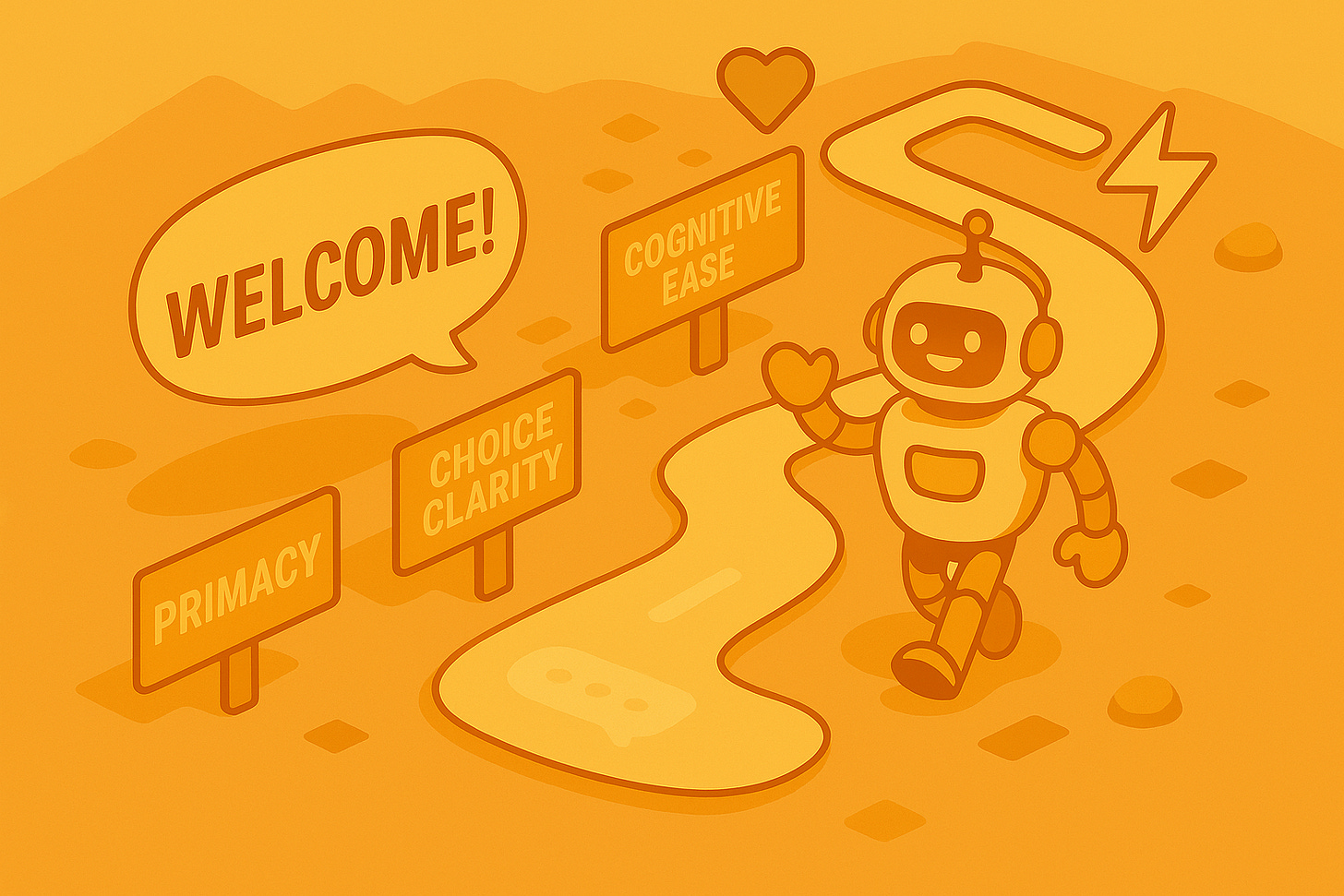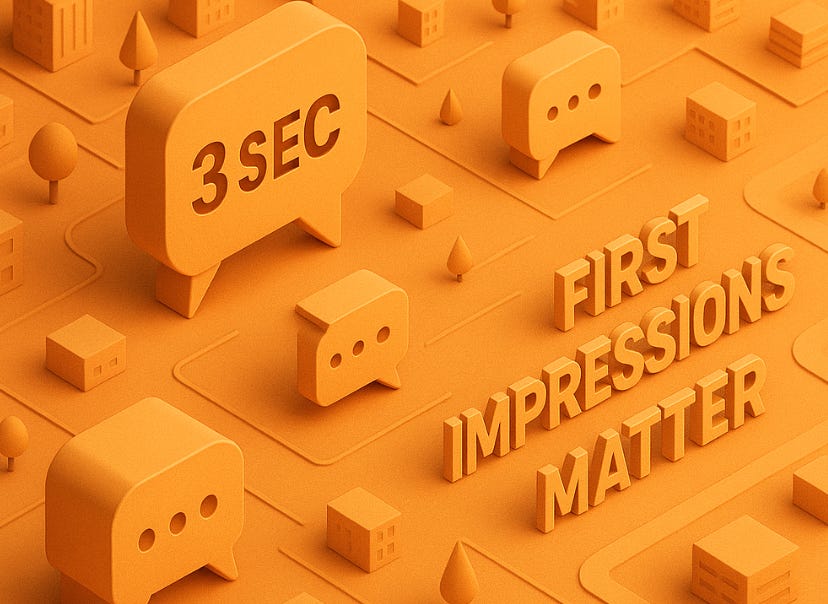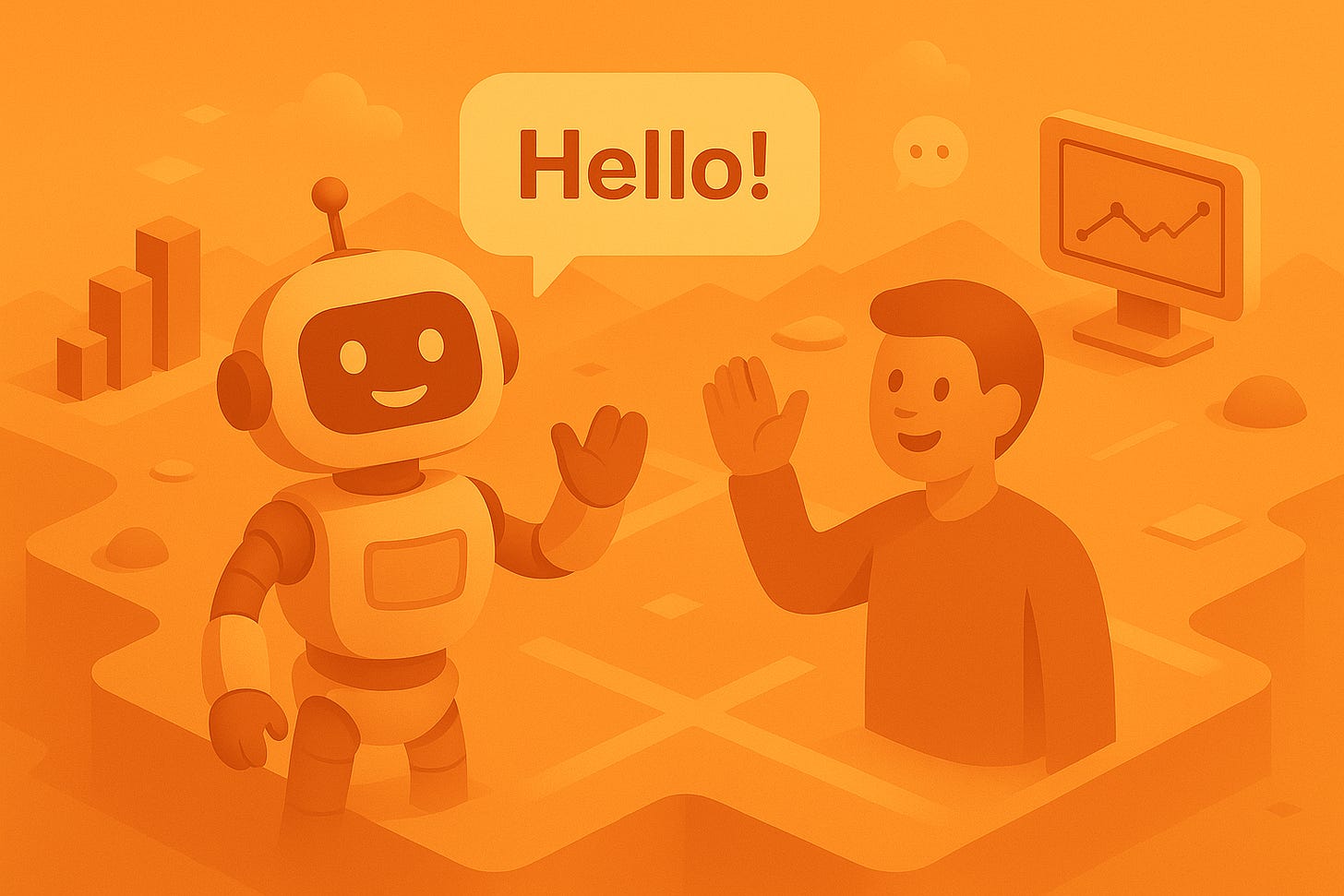The Science of the First Message: Hooking Visitors in 3 Seconds
Imagine walking into a store and the greeter ignores you, or worse, delivers a monotone “How can I help you?” without even a smile. Awkward, right? On your website, the chat agent’s welcome message is that greeter, and you’ve got as little as three seconds to get it right. Business owners and webmasters often agonize over site design and ad copy, but the very first line your chat agent utters can be just as critical. In this post, we’ll dive into the science and strategy behind crafting a welcome message so irresistible that visitors are hooked in seconds. (No pressure, you’re only trying to charm people faster than it takes to read this sentence.)
First Impressions Matter – A Lot (Even for Chat agents!)
We all know the saying: “You never get a second chance to make a first impression.” It holds true whether you’re meeting someone in person or interacting with an AI chatbot. Studies show that humans form impressions of people in as little as one-tenth of a second. One moment you’re a blank slate, the next a lasting judgment has been made. Websites are no different – users often decide within a few seconds if they’ll engage or bounce. In fact, marketing experts note that online visitors give you under 3 seconds to grab their attention before moving on. Your chatbot’s opening line is effectively the handshake of your website – and a limp handshake won’t cut it.
Why are those first few seconds so impactful? One reason is the primacy effect – a psychological principle that says we remember the first piece of information we encounter better than what comes later. The initial message a user sees in the chat window will colour their perception of the entire interaction. As chatbot writer Casey Phillips puts it, the greeting “provides an opportunity to create a strong first impression that will hopefully yield more recurring users”. Miss that opportunity, and your visitor may close the chat (or the website) never to return.
There’s also a trust factor at play from the get-go. Users are subconsciously judging your bot’s credibility and your brand’s competence as soon as that first bubble pops up. Something as simple as a typo or clunky phrasing in the welcome message can plant seeds of doubt. (“If this chatbot can’t spell, how can it help me?”) On the flip side, a polished, friendly greeting signals professionalism. It says “This bot (and by extension, this company) knows what it’s doing.” Small details in those first words – correct grammar, a genuine tone – can make a big difference in whether a visitor sticks around to see what your chatbot (and business) has to offer.
The Psychology Behind the Perfect Welcome Message
Crafting a great first message isn’t just an art – it’s science. Let’s break down the psychological and behavioural reasons why the wording and tone of that opener matter so much:
Primacy Effect – “First = Favourite.” In a chat context, the welcome message frames the entire conversation. If the first thing your visitor sees is “Hello! I’m here to help with product questions”, and it’s clear and positive, users will carry that favourable impression forward. But if the first message is vague or unhelpful, that negativity may taint everything that follows. Advertisers and performers have long used primacy to their advantage – whether it’s the first joke in a comedy set or the catchy slogan on a landing page, leading with strong material helps ensure it’s remembered.
Cognitive Load – Keep it Brain-Friendly. Cognitive load is a fancy term for how much mental effort something requires. A well-designed chatbot should never make the user work hard to understand or respond. If your welcome message is a 100-word paragraph detailing every possible service, guess what – most visitors won’t read it. They’ll feel overwhelmed (even if only subconsciously) and likely abandon the chat. Psychologists have shown that when people are confronted with too much information at once, it can cause stress or decision paralysis. Keep the greeting concise and digestible. A short, to-the-point message (“Hi there! I’m an AI assistant – ask me about our products or orders anytime.”) invites engagement by lowering the mental barrier to entry.
Decision Fatigue – Too Many Choices, No Choices. Ever felt exhausted deciding what to order from a 20-page restaurant menu? That’s decision fatigue creeping in. When people are faced with too many options or a complex question, they’re more likely to shut down and choose none. In the chatbot world, this means an opening message like “Welcome! I can help with sales, support, appointments, FAQs, pricing, shipping, returns – what do you need?” might be too much, too soon. The user sees a laundry list of choices and freezes up, unsure where to click. The remedy is straightforward: limit the options initially. By avoiding overload and presenting 2–3 clear choices or a simple open question, they’ll feel in control and are more likely to interact further.
Tone and Trust – Warmth Wins Hearts. How you say something can matter even more than what you say. A fascinating study published in the Journal of Business Research in 2021 examined chatbot greetings and found that a warm, friendly initial message significantly increased user engagement with the brand compared to a more formal or “competence-focused” message. In the study, chatbots that opened with a personable greeting (think along the lines of “Hi there! 👋 I’m Kate, the virtual assistant. I’m excited to help you today!”) made customers feel closer to the brand, whereas overly curt or purely transactional greetings (“Hello. I am the 24/7 virtual assistant.”) were less engaging. This doesn’t mean your bot should start cracking jokes in all cases, but adopting a tone that is welcoming, human, and on-brand can pay off. Users tend to respond positively to warmth and approachability – it’s the digital equivalent of a smile.
Speed – Instant Availability and Response. One of the biggest advantages of chatbots is that they’re right there, ready to help the moment a visitor arrives. Users appreciate quick replies – in one survey, 68% of consumers said the most positive aspect of chatting with a chatbot is how quickly it answers. That means your first message should appear promptly. A snappy greeting not only leverages that expectation of immediacy but also shows the user that help is readily available. Ensure the bot’s first message is visible when the visitor is most likely to notice it, and that it aligns with the quick-service promise (no one wants to greet a bot only to wait 30 seconds for its response).
Now that we know why that first message matters, let’s talk about how to nail it. What does an optimized welcome message look like in practice?
Crafting the Ultimate 3-Second Hook: Best Practices for Chatbot Greetings
The welcome message your chatbot delivers in those first few seconds can shape the entire user experience. Here are some proven best practices to make that moment count:
1. Keep It Short and Snappy
Always start with a clear and concise message. A simple one-liner or a quick greeting plus a question works best. Instead of explaining everything upfront, aim to open the conversation. For example:
“Hi! Welcome to [Brand]. Got any questions for me?” is far more effective than a paragraph of information.
2. Sound Human and Stay On-Brand
Let your chatbot reflect your brand’s personality—whether it’s professional, quirky, or friendly. Giving it a name (like “Ava, your virtual assistant”) adds a human touch.
3. Set Clear Expectations
Be upfront about what the chatbot can assist with. Letting users know the scope—such as answering questions about products, pricing, or tracking—builds trust and prevents frustration.
4.Avoid Information Overload
Limit the number of initial options. Too many choices can overwhelm users. If your bot handles multiple topics, guide users step by step rather than presenting everything at once.
5. Prioritize Clarity and Quality
Ensure your message is free from typos, jargon, or confusing internal terms. Use plain language and keep it user-friendly. A polished, well-written welcome helps build credibility from the start.
A strong opening sets the tone for the whole interaction—so keep it simple, human, and helpful.
Putting It Into Practice (Your Turn!)
Understanding the theory is one thing; implementing it on your own site is another. The good news is that modern chatbot platforms make it easy to customize your welcome message. For instance, on our product WebsiteChat.in, you can set a custom greeting for your chatbot that matches your brand’s voice and intent. Want your bot to say “Hey there! Welcome 👋 Can I help you find something?” instead of a stock phrase? Go for it – the power is in your hands.
If you haven’t yet set up a custom welcome message on your site’s chatbot, consider this your sign to do so. It’s often a quick configuration tweak that can have outsized impact on user engagement. Think about what your customers need to hear first. Is it a friendly greeting? A quick summary of how you can help? A common question with answers? Try a few variations and see which gets the best response.
And if you’re new to all this? No worries – it’s easier than you think to get started. In fact, WebsiteChat offers a free trial, so you can test drive your chatbot welcome message and see how visitors react in real time. Go ahead, write a warm, witty greeting and unleash it on your homepage. You might be pleasantly surprised at how visitors start sticking around longer and asking more questions when they’re met with a chatbot that feels genuinely inviting.
Conclusion: You Had Me at “Hello”
In the world of website chat agents, that first “Hello” is essentially your make-or-break moment. It’s the 3-second window where a visitor decides whether to engage or ignore, to feel intrigued or indifferent. We’ve seen that psychology is on the side of those who put thought into their opener – from the primacy effect anchoring user attention, to cognitive load and decision fatigue reminding us that simplicity and clarity reign supreme. A touch of warmth and humanity can elevate a dull chat agent into a charming digital concierge. Conversely, a robotic or overwhelming greeting can send potential customers running.
The takeaway for business owners and website creators is clear: don’t leave your chatbot’s welcome message to chance. It’s a tiny snippet of text that can have a huge influence on user behaviour. The best part is, you have full control over it – this is your opportunity to literally put words in your bot’s mouth that reflect your brand’s values and make visitors feel at home.
So, the next time you’re tweaking your website, give that chatbot greeting the attention it deserves. Write it, polish it, infuse it with your brand’s charm, and back it with the science of what works. Your visitors will feel the difference immediately – often subconsciously – and that can translate into more chats, more leads, and more happy customers down the line. After all, a great conversation often begins with a great first message.
Ready to craft an irresistible first impression? Go on and try it out! If you’re curious to see the impact on your own site, you can set up a custom welcome message (and much more) with a free trial of WebsiteChat. In the grand conversation between you and your audience, those first words are golden – make them shine, and your visitors just might say “Hello” back.



